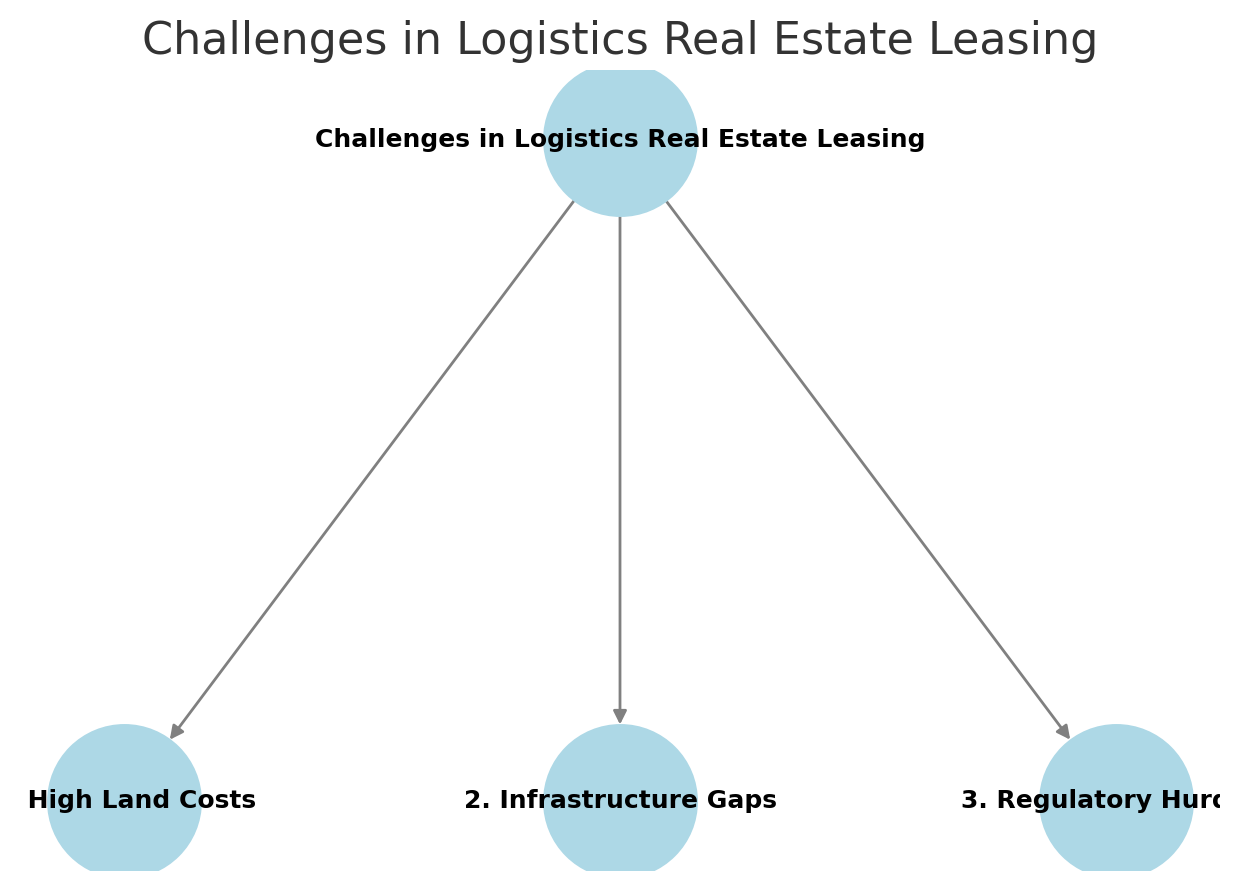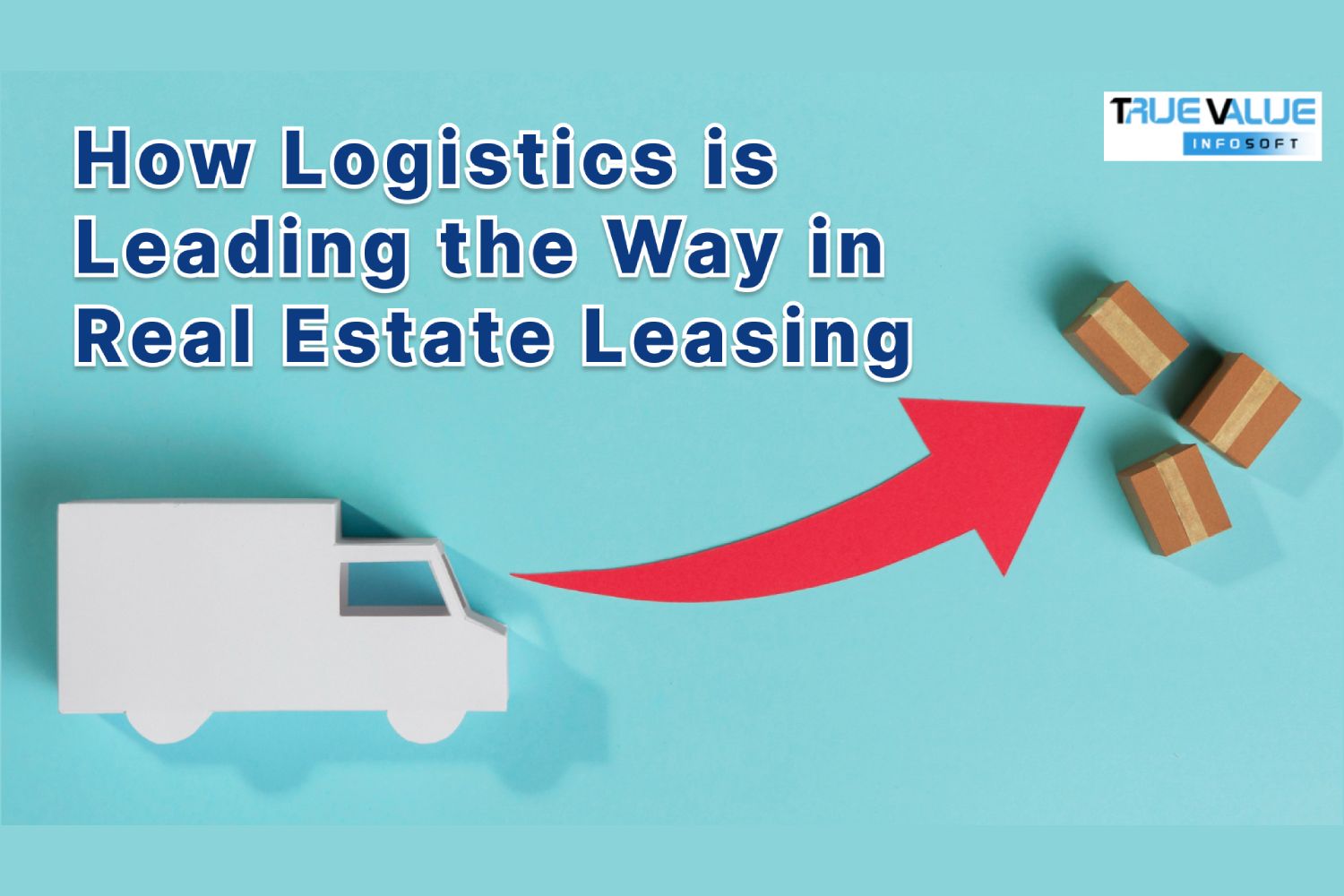In recent years, the logistics sector has emerged as a key driver of real estate leasing, reshaping the way industrial and commercial spaces are utilized. With the surge in e-commerce, rapid technological advancements, and evolving consumer demands, logistics companies are increasingly leasing larger, more sophisticated spaces to support seamless operations. This shift is not only transforming the logistics industry but also creating ripples across the real estate landscape.
Let’s explore how logistics is leading the way in real estate leasing and the key factors driving this trend.
The Role of Logistics in Real Estate Leasing
The logistics sector has always been a significant player in the real estate market, but its role has expanded dramatically in recent years. Here's why:
1. E-commerce Business
The rise of online shopping has redefined consumer behavior, with customers expecting faster delivery times and a seamless experience. To meet this demand, e-commerce giants and third-party logistics (3PL) companies are leasing vast warehousing spaces in strategic locations. From last-mile delivery hubs to mega-distribution centers, logistics players are driving demand for modern, tech-enabled facilities.
2. Supply Chain Optimization
Companies are increasingly focusing on optimizing their supply chains to improve efficiency and reduce costs. This has led to a growing need for strategically located warehouses near urban centers, ports, and transportation hubs, fueling leasing activity in prime real estate markets.
3. Shift to Grade-A Warehouses
Logistics companies are moving away from traditional, fragmented spaces toward Grade-A warehouses equipped with modern amenities such as automation, robotics, and energy-efficient solutions. These facilities improve operational efficiency and cater to the specific needs of industries like e-commerce, FMCG, and manufacturing.
Key Drivers of Logistics-Driven Real Estate Leasing
1. Increased Demand for Space
The demand for warehousing and logistics spaces has skyrocketed. According to recent industry reports, leasing activity in the logistics and industrial segment has grown significantly, accounting for a substantial share of total commercial real estate leasing.
2. Strategic Location Requirements
Logistics operations depend heavily on location. Companies are leasing properties in key areas, including:
- Urban Centers: For last-mile delivery hubs.
- Industrial Corridors: For manufacturing and bulk storage.
- Ports and Airports: To facilitate global trade.
Locations near metro cities or major highways are especially in demand due to their connectivity advantages.
3. Technology Integration
With the adoption of technology such as AI, IoT, and robotics, logistics companies are opting for facilities that can accommodate these advancements. Smart warehouses with features like real-time tracking, automated sorting systems, and advanced inventory management are becoming the norm.
4. The Rise of Cold Storage
The increasing need for temperature-controlled logistics, driven by sectors like pharmaceuticals, food, and agriculture, has led to a spike in demand for cold storage facilities. These specialized spaces are an important component of logistics leasing today.
5. ESG (Environmental, Social, and Governance) Trends
Sustainability is becoming a priority for logistics companies. Energy-efficient buildings, solar-powered warehouses, and facilities adhering to green building standards are increasingly sought after. This aligns with the growing consumer and corporate emphasis on sustainable practices.
Impacts on the Real Estate Market
1. Growth of Industrial and Logistics Parks
The rise in logistics leasing has encouraged the development of large-scale industrial parks that cater specifically to logistics and warehousing needs. These parks provide integrated solutions, including modern infrastructure, connectivity, and scalability options.
2. Increased Investments
The logistics sector’s contribution to real estate has attracted significant investments from domestic and global players. Real estate investment trusts (REITs) focusing on industrial and logistics assets are gaining traction, further fueling growth in this segment.
3. Boost to Tier-2 and Tier-3 Cities
While metro cities continue to dominate leasing activity, tier-2 and tier-3 cities are emerging as logistics hubs due to their affordability and strategic importance in connecting rural and urban markets. Cities like Pune, Ahmedabad, Coimbatore, and Lucknow are witnessing a rise in leasing activity.
Challenges in Logistics Real Estate Leasing

While the logistics-driven real estate boom is promising, it does come with challenges:
- High Land Costs: Prime locations come at a premium, increasing leasing expenses for logistics companies.
- Infrastructure Gaps: In certain regions, inadequate infrastructure and connectivity can hinder the effectiveness of logistics operations.
- Regulatory Hurdles: Compliance with local zoning and land use regulations can be complex, especially for large-scale projects.
Future Outlook
The logistics sector is expected to remain a dominant force in real estate leasing, driven by the continued growth of e-commerce, technological advancements, and increasing globalization.
Key Trends to Watch:
- Automation and Smart Facilities: Warehouses equipped with robotics, IoT, and AI will see increased demand.
- Sustainability Practices: Energy-efficient and green-certified warehouses will become industry standards.
- Multi-Story Warehouses: To maximize space in high-demand urban areas, multi-story facilities will grow in popularity.
- Rural Expansion: As companies aim to penetrate rural markets, logistics leasing in smaller cities and towns will rise.
Conclusion
The symbiotic relationship between the logistics sector and real estate is reshaping the industry, creating new opportunities for growth and innovation. By driving demand for smarter, strategically located, and sustainable spaces, logistics companies are not only fueling the real estate leasing market but also playing a crucial role in the broader economic landscape.
As logistics continues to lead the way in real estate leasing, stakeholders must embrace this transformation, leveraging technology and sustainability to meet the evolving demands of a dynamic market.
FAQs
Logistics is driving real estate leasing due to the rapid growth of e-commerce, increased demand for last-mile delivery solutions, and the need for strategically located distribution centers. Businesses require efficient supply chain operations, leading to high demand for warehouses, fulfillment centers, and industrial spaces.
E-commerce has significantly increased the need for logistics hubs close to major urban centers to ensure faster deliveries. Companies are leasing larger warehouse spaces and fulfillment centers to manage inventory, process returns efficiently, and meet customer expectations for quick shipping.
The demand is highest for industrial properties such as distribution centers, cold storage facilities, urban warehouses, and cross-dock terminals. Multi-story warehouses are also gaining traction in dense metropolitan areas where space is limited.
Advanced technology, including AI, robotics, and IoT, is optimizing warehouse operations, making it essential for real estate properties to accommodate smart logistics solutions. Automated storage and retrieval systems (AS/RS) and drone-based inventory management are influencing warehouse design and leasing decisions.
Future trends include the rise of micro-fulfillment centers in urban areas, increased demand for sustainable warehouses with green certifications, and flexible leasing models to accommodate fluctuating inventory needs. The integration of AI-driven predictive analytics will also help businesses optimize their space requirements.





